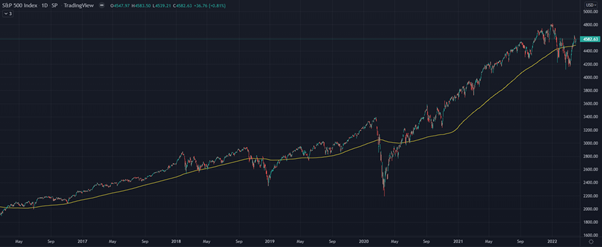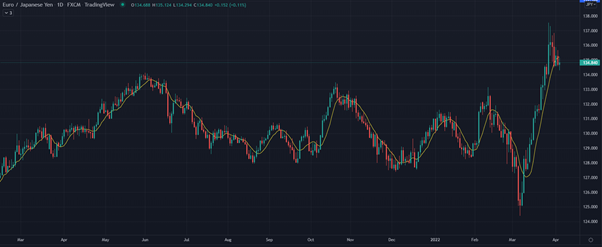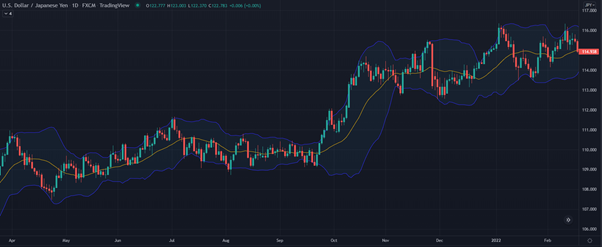Profitable trading is not about predicting the future but seeing the present. It’s about process, discipline, risk management, and self-awareness.
In fact, research shows the 10% of traders who put on the most trades have average annual returns 7% lower than the 10% of traders who put on the least trades.
Consistent and profitable trading is about accepting small profits, small losses and big profits while eradicating the big losses. People ask, ‘should I buy or sell?’ but trade entry is not the critical factor, what is MORE important is where we exit the trade, whether it’s a profit or a loss, and our position size.
Here are some popular trading strategies:
- Trend following
- Swing trading
- Fundamental position trading
- Long term buy and hold
- Event driven trading
- Mean reversion trading
Learn more about each strategy below.

Trend following is by far the most popular trading strategy and employed by fund managers, automated via algorithms, and executed by retail traders alike.
In fact, trend following means that the trader could capture every profitable trend whether it be up or down, however the strategy will bleed money when markets are in sideways ranges.
Two popular trend following strategies are the 200-day moving average (dma) and the 8-day moving average.
Longer term equity investors like the 200 dma where they buy their favoured equities when they cross above the 200 dma and sell them when they cross below. This is simple and captures the large uptrends while it also manages risk when asset prices fall.

The S&P Index and the 200-day moving average. Trend following and risk management (Source: TradingView)
Drag to resize
Shorter term traders obviously favour shorter averages such as the 8-day moving average which will get them quickly into intermediate trends which typically last up to 3 months (though of course the price could move against them at any time, hence the importance of stop loss levels).
Trend following is a simple strategy to understand and offers many trading opportunities in all asset classes.

EURJPY currency with 8-day moving average. Capturing shorter intermediate term trends. (Source: TradingView)
Swing trading is another trading strategy driven by price action as opposed to fundamental market drivers.
Traders will look for short term price ‘swings’ using technical analysis tools such as Bollinger Bands for extreme market movements, Elliot wave theory for price expectations, and oscillators looking for over bought and over sold price conditions.
This strategy requires plenty of research of technical analysis tools, discipline and attention in front of the screens, but executed with discipline can reap consistent rewards.
Trading off fundamental news such as economic data, earning reports and central bank policy changes tends to be the reserve of professional investors with access to expert analysis, thorough understanding of financial markets and plenty of experience.
Related article: 12 Trading Tips for BeginnersThe risk for retail traders is that asset prices can often move against rational expectations driven by algorithmic trading or extreme market positioning (everyone is already long!). The famous quote by John Maynard Keynes springs to mind, ‘The market can stay irrational longer than you can stay solvent.’
Indeed, who thought the price of oil could trade at minus (yes minus!) -$40 in April 2020. Again, risk management is critical.
Buy and hold is not so much a trading strategy but more investing for the long term.
This is typical of the passive investor and a relaxed strategy. Of course, over a multiyear/decade it would expect to be profitable as asset prices rise but over that time it will see considerable drawdowns and the most important criteria here is of course the entry level.
Buying just after a large asset price fall is a far more beneficial entry level than just before!
A classic example of a buy and hold strategy that failed is traders ‘hodling’ cryptocurrencies ‘with laser eyes’ and using leverage to be long of Bitcoin when it reached $69,000 in November 2021 only to have their leverage positions wiped out when it subsequently fell 50%.
Trading with leverage is extremely risky, especially in volatile markets.

Some traders like to trade off specific news and events looking to make short term profits by jumping on the market reaction to news.
Related article: What is ESG Investing? Environmental, Social, GovernanceWhile this can be profitable it has become harder in recent years (along with day trading) due to the rise of algorithms that can execute trades on reaction to the news far faster.
When markets move quickly in one direction, they typically move too far too fast and then revert back to the mean.
This is why markets trend in waves rather than moving in a straight line. Mean reversion traders typically use Bollinger Bands (standard deviations) looking for extreme movements to execute reversal traders.
This strategy works particularly well in range bound markets and only uses capital for a short period of time. But it can be hard for a trader psychologically to trade against the shorter-term trend. Again, risk management and discipline are the keys.

USDJPY trading between 2 standard deviation Bollinger Bands. The price only moves outside of the bands 5% of the time offering mean reversion trading opportunities. (Source: TradingView)
Drag to resize
To conclude there are many trading strategies that can be profitable over time. The key is to have a process (back tested if possible), with strict risk management to prevent large losses occurring.
Trade entry is not the only key to profitability, exiting the trade and position size are equally critical. Then of course it’s down to the trader, where discipline and self-awareness (controlling emotions) are equally important.







